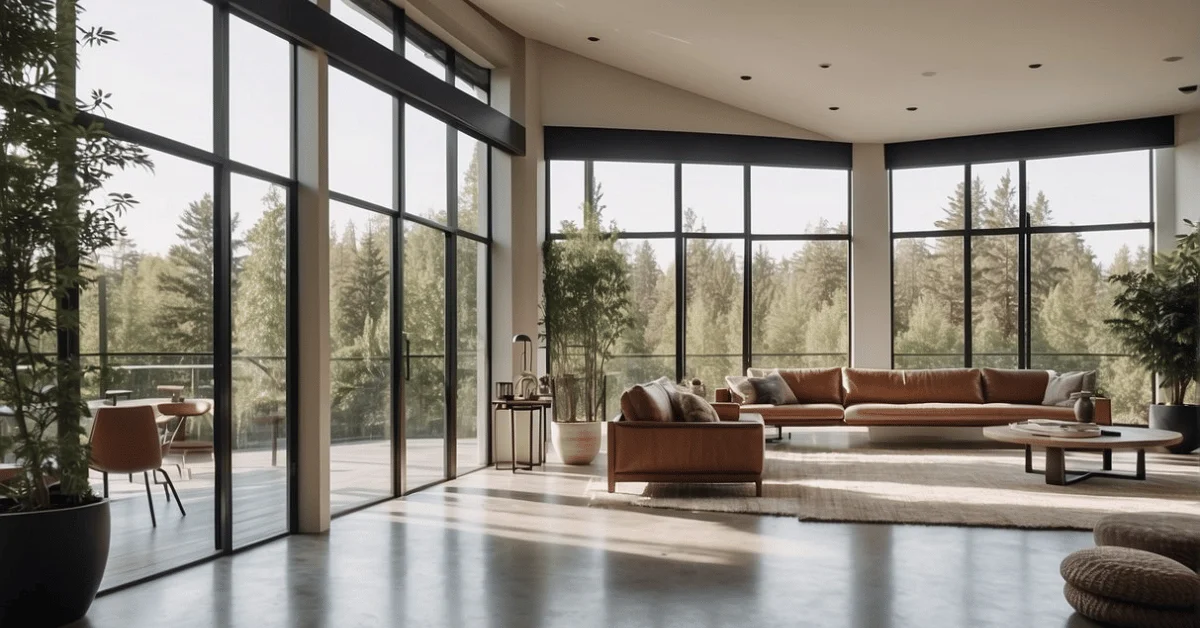Modern minimalist houses are becoming increasingly popular as people seek to simplify their lives and reduce their environmental footprint. These homes are characterized by clean lines, simple designs, and a focus on functionality over decoration. They prioritize open spaces, natural light, and a limited color palette to create a serene and uncluttered environment.
At their core, modern minimalist homes are a reflection of the minimalism movement, which emphasizes the importance of living with less and focusing on what truly matters. This design philosophy is based on the idea that by reducing the number of possessions and distractions in our lives, we can free up time and mental energy to focus on the things that really matter, such as relationships, personal growth, and experiences.
The design principles of modern minimalist homes are rooted in simplicity, functionality, and sustainability. They prioritize quality over quantity, and aim to create spaces that are both beautiful and practical. By using natural materials, maximizing natural light, and incorporating sustainable design elements, these homes are not only aesthetically pleasing, but also environmentally friendly and energy-efficient.
Key Takeaways
- Modern minimalist homes prioritize simplicity, functionality, and sustainability.
- They are a reflection of the minimalism movement, which emphasizes the importance of living with less and focusing on what truly matters.
- By using natural materials, maximizing natural light, and incorporating sustainable design elements, these homes are not only aesthetically pleasing, but also environmentally friendly and energy-efficient.
Design Principles of Modern Minimalist Homes
When it comes to modern minimalist homes, the design principles are all about embracing negative space, focusing on functionality, and adhering to minimalist design aesthetics. We will discuss each of these principles in detail below.
Embracing Negative Space
One of the defining characteristics of minimalist design is the use of negative space. This means that instead of filling a room with clutter and unnecessary items, we focus on creating an open and airy space. The use of negative space can help to create a calming and relaxing atmosphere in a home, which is perfect for those who want to escape the chaos of modern life.
Focus on Functionality
Another important principle of modern minimalist homes is the focus on functionality. This means that every item in a home should serve a purpose and have a practical use. For example, instead of having a coffee table that is purely decorative, we might choose a table that also doubles as storage space. By focusing on functionality, we can create a home that is both beautiful and practical.
Minimalist Design Aesthetics
Finally, modern minimalist homes are defined by their minimalist design aesthetics. This means that we prioritize clean lines, simplicity, and natural materials. When it comes to furniture, we might choose pieces that are made from wood or other natural materials, and that have a simple and elegant design. By sticking to minimalist design principles, we can create a home that is both stylish and timeless.
In summary, the design principles of modern minimalist homes are all about embracing negative space, focusing on functionality, and adhering to minimalist design aesthetics. By following these principles, we can create a home that is both beautiful and practical, and that provides a calming and relaxing sanctuary from the chaos of modern life.
Architectural Elements
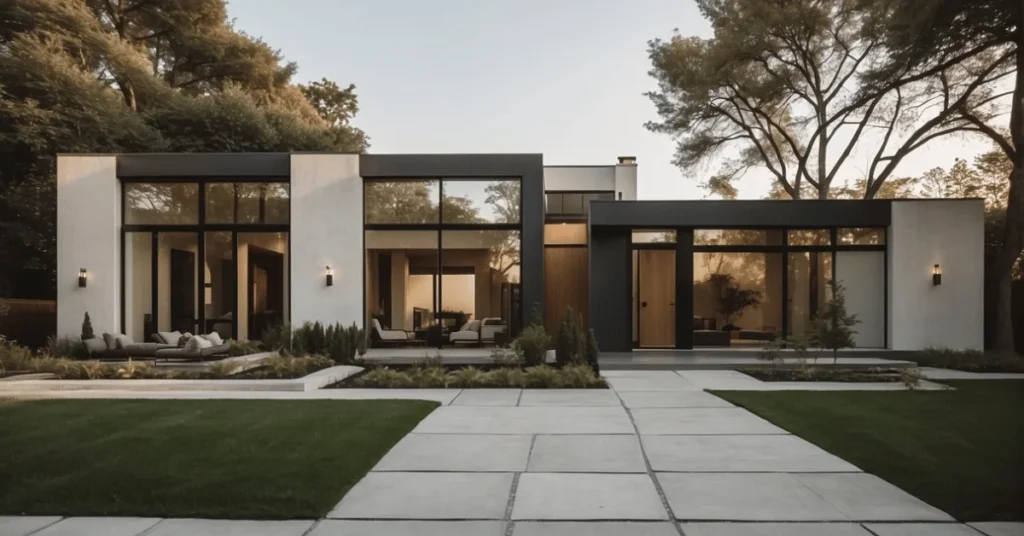
When it comes to modern minimalist house design, there are several architectural elements that are essential to achieving the desired aesthetic. In this section, we will explore some of the key features that make up this style of architecture.
Use of Natural Light
One of the defining characteristics of modern minimalist house design is the use of natural light. Large windows, skylights, and glass doors are often used to allow as much natural light as possible into the home. This not only creates a bright and airy atmosphere but also helps to reduce energy consumption by minimizing the need for artificial lighting.
Incorporating Natural Materials
Another important aspect of modern minimalist house design is the use of natural materials. Wood, concrete, and steel are often used to create a sleek and modern look, while also bringing a sense of warmth and texture to the space. Exposed wood beams are a particularly popular feature, adding a rustic touch to an otherwise minimalist design.
Sleek Structural Features
The structural features of a modern minimalist house are often sleek and simple, with clean lines and minimal ornamentation. This helps to create a sense of spaciousness and openness, while also emphasizing the beauty of the natural materials used in the home’s construction. Glass walls and doors are also commonly used to create a seamless transition between indoor and outdoor spaces.
In conclusion, the architectural elements that make up a modern minimalist house are all designed to create a sense of simplicity, openness, and harmony with the natural world. By incorporating natural materials, maximizing natural light, and emphasizing sleek structural features, this style of architecture creates a space that is both functional and aesthetically pleasing.
Interior Design and Furnishing
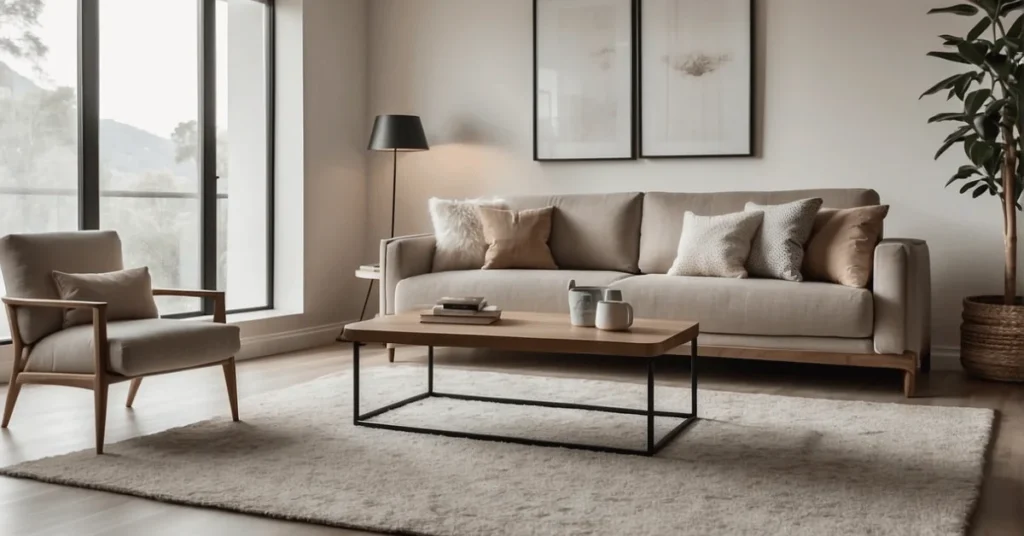
When it comes to designing a modern minimalist house, selecting the right furniture and decor is crucial. We want to create a space that is functional, aesthetically pleasing, and free of clutter. In this section, we will discuss the key elements of interior design and furnishing for a modern minimalist house.
Selecting Minimalist Furniture
Minimalist furniture is characterized by clean lines, simple shapes, and a focus on functionality. When selecting furniture pieces for a modern minimalist house, we want to choose items that serve a purpose and are not just for decoration. We recommend investing in high-quality pieces that will last a long time and not go out of style. Some popular materials for minimalist furniture include wood, metal, and leather.
Color and Texture Choices
Neutral walls are a staple of modern minimalist design, but that doesn’t mean we can’t add a pop of color or texture. We recommend choosing one or two accent colors and incorporating them into the space through decor or furniture pieces. Texture can also add visual interest to a minimalist space. Consider incorporating natural materials such as wool, linen, or jute into the design.
Strategic Storage Solutions
Storage is key in a modern minimalist house. We want to keep the space free of clutter, but also have everything we need within reach. We recommend incorporating storage solutions into the design, such as built-in shelving, hidden cabinets, and multifunctional furniture pieces. This will help keep the space organized and functional without sacrificing style.
In conclusion, designing a modern minimalist house requires careful consideration of interior design and furnishing. By selecting minimalist furniture, incorporating color and texture, and implementing strategic storage solutions, we can create a functional and aesthetically pleasing space that is free of clutter.
Influence and Variations
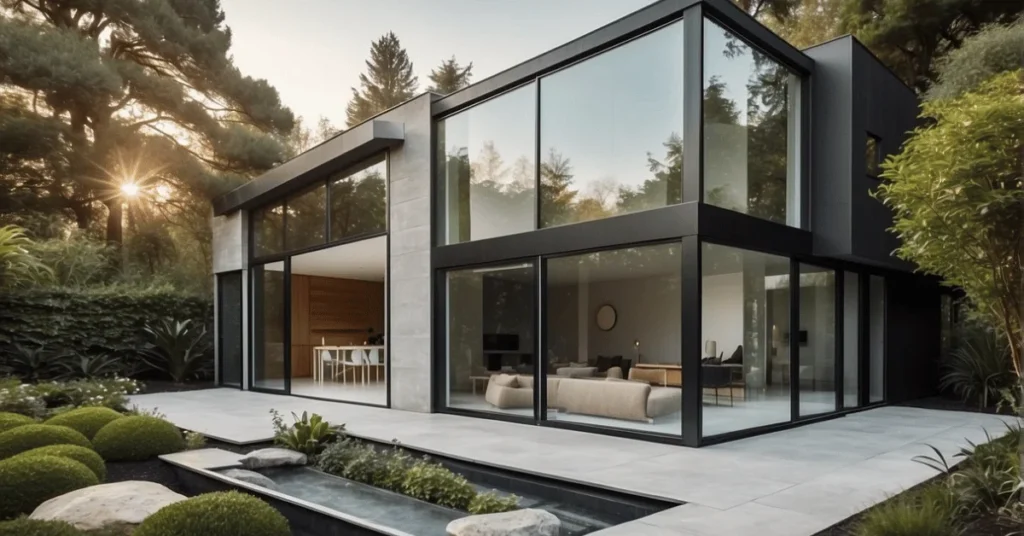
Minimalism has become one of the most influential and widely used architectural styles in the world. It has taken various influences and shared some concepts, resulting in a wide range of variations. In this section, we will explore some of the most popular minimalist variations.
Scandinavian Minimalism
Scandinavian Minimalism is a popular variation of minimalism that emphasizes simplicity, functionality, and natural materials. It is characterized by clean lines, neutral colors, and an abundance of natural light. This style has its roots in the Scandinavian design movement of the 1950s, which emphasized the use of natural materials like wood, stone, and leather. Today, Scandinavian Minimalism is popular all over the world and is often used in modern architecture.
Asian-Inspired Simplicity
Asian-Inspired Simplicity is another popular variation of minimalism that emphasizes simplicity and functionality. This style is characterized by clean lines, neutral colors, and an emphasis on natural materials like bamboo, stone, and wood. It has its roots in traditional Japanese architecture, which has always focused on minimalism and simplicity. Today, Asian-Inspired Simplicity is popular all over the world and is often used in modern architecture.
Regional Interpretations
Minimalism has been adapted and interpreted in many different ways all over the world. In Europe, for example, minimalism often emphasizes the use of natural materials and clean lines. In South America, minimalism is often characterized by the use of bright colors and bold patterns. In Morocco, minimalism often emphasizes the use of intricate patterns and geometric shapes. These regional interpretations are a testament to the versatility and adaptability of minimalism as an architectural style.
In conclusion, minimalism is a versatile and adaptable architectural style that has taken various influences and shared some concepts. Scandinavian Minimalism, Asian-Inspired Simplicity, and regional interpretations are just a few examples of the many variations of minimalism that exist today.
Living the Minimalist Lifestyle
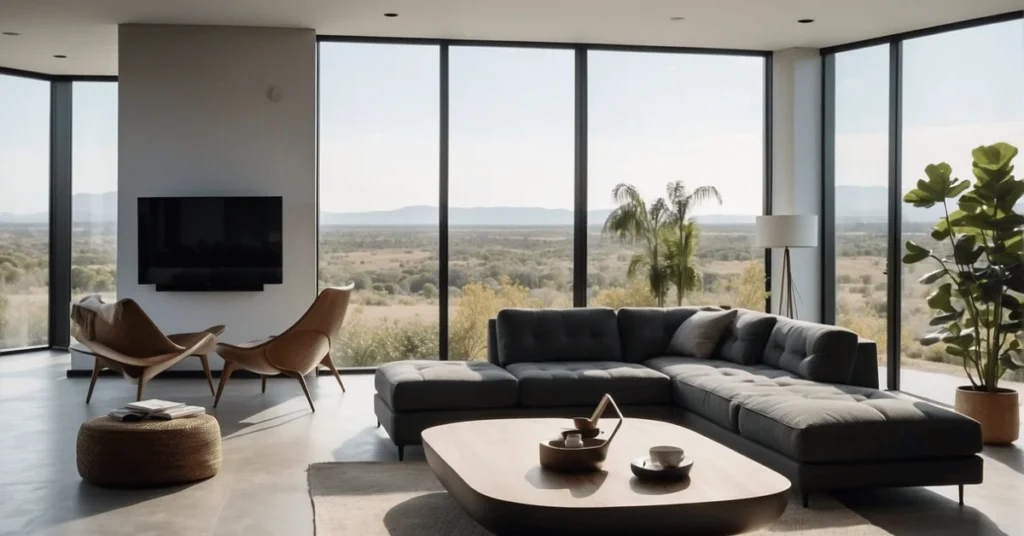
Minimalism is a lifestyle that is gaining popularity because of its emphasis on simplicity, tranquility, and peace. We believe that living a minimalist lifestyle can bring many benefits to our lives, including a sense of calm and clarity. In this section, we will discuss two important aspects of the minimalist lifestyle: decluttering for tranquility and sustainability.
Decluttering for Tranquility
One of the first steps towards living a minimalist lifestyle is to declutter your space. When we have too many possessions, it can be overwhelming and stressful. By decluttering, we can create a more peaceful and organized environment that supports our well-being. To declutter effectively, we recommend following the KonMari method, which involves discarding items that do not “spark joy.” This approach can help us let go of things that no longer serve us and create space for the things that truly matter.
Sustainability and Minimalism
Sustainability is another important aspect of the minimalist lifestyle. By living with fewer possessions, we can reduce our consumption and waste. We can also choose to buy products that are eco-friendly and made from sustainable materials. For example, we can opt for furniture made from recycled materials or invest in energy-efficient appliances. By making these choices, we can reduce our impact on the environment and live in harmony with nature.
In conclusion, living a minimalist lifestyle can bring many benefits to our lives, including a sense of tranquility and sustainability. By decluttering our space and making eco-friendly choices, we can create a more peaceful and harmonious environment for ourselves and future generations.
Frequently Asked Questions
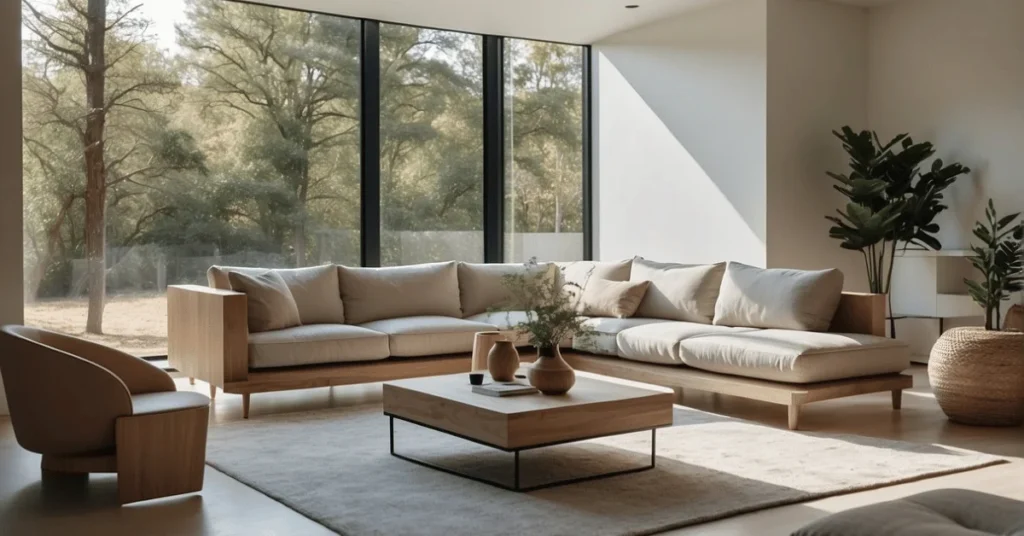
How can minimalist furniture complement a modern minimalist house design?
Minimalist furniture is an essential element in creating a modern minimalist house design. It is characterized by clean lines, simple shapes, and a focus on function over form. The furniture pieces should be functional, comfortable, and visually appealing without adding unnecessary clutter to the space. The color palette for minimalist furniture should be neutral, with black, white, and grey being the most popular choices.
What are the key features of modern minimalist house plans?
Modern minimalist house plans are characterized by simplicity, functionality, and clean lines. They typically have an open floor plan, with a focus on natural light and a connection to the outdoors. The materials used in modern minimalist house plans are often industrial, such as concrete, steel, and glass. The color palette is usually neutral, with white, black, and grey being the most common choices.
What are the principles of modern minimalist interior design?
The principles of modern minimalist interior design are simplicity, functionality, and the use of natural materials. The focus is on creating a space that is free of clutter and distractions, with a few carefully chosen pieces that are both functional and visually appealing. The color palette is usually neutral, with an emphasis on white, black, and grey.
How does the exterior of a modern minimalist house typically look?
The exterior of a modern minimalist house typically has clean lines, a simple color palette, and a focus on natural materials. The use of industrial materials such as concrete, steel, and glass is common. The landscaping is often minimal, with a focus on natural elements such as rocks and plants.
How can a small house adopt minimalist interior design effectively?
A small house can adopt minimalist interior design effectively by focusing on functionality and simplicity. The furniture should be carefully chosen to maximize space and serve multiple purposes. The color palette should be neutral, with an emphasis on white, black, and grey. Storage solutions should be incorporated into the design to minimize clutter and maximize space.
What are some characteristics of the best minimalist house designs?
The best minimalist house designs are characterized by simplicity, functionality, and a focus on natural materials. The use of clean lines, neutral colors, and natural light is essential. The furniture should be carefully chosen to maximize space and serve multiple purposes. The landscaping should be minimal, with a focus on natural elements such as rocks and plants.
Celebrating the essence of modern minimalist homes, we’ve delved into their design intricacies. Now, we’re curious: What personal touches do you infuse into your modern minimalist house? Share your insights and join the conversation in the comments below!

